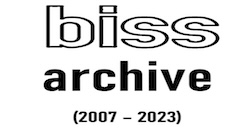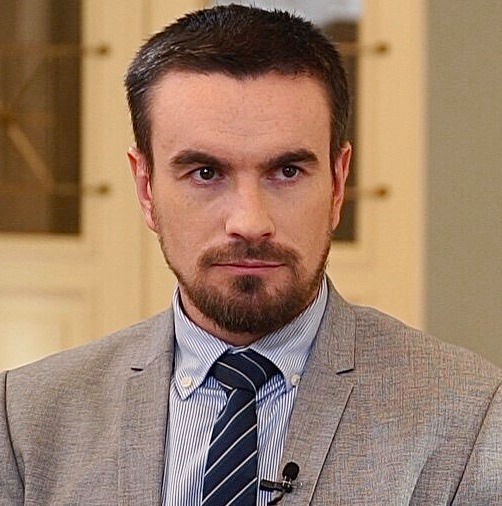Although the European Dialogue on Modernisation with Belarus has just kicked off, it has already faced a barrage of criticism from both Belarusian and European experts. Nevertheless, despite its somewhat vague nature and equivocal objectives, it seems to stand a chance of turning into an efficient platform for a variety of stakeholders to communicate and has a potential for drawing attention to Belarusian issues in the European political scene.
“Dialogue” instead of “Partnership”
It is getting more and more obvious that the European Union’s eastern policy fails to bear the fruit that its architects intended to reap. The Eastern Partnership, which was officially launched in 2009, has very serious issues. Its prime objective – to encourage Eastern European states and the South Caucasus to gravitate towards Europe by employing a policy of political conditionality – has not been achieved this far, and this is especially apparent in the case of Belarus. However, judging by the developments observed in the past 24 months, Ukraine has also been making headway towards a stronger authoritarian regime, i.e. away from the European Union. These trends naturally disillusion European policy-makers and cause them to lose their interest in the eastern policy as a whole, as it will hardly become a “success story” in the foreseeable future or yield political dividends for its promoters.
Also adding uncertainty to the situation is the vagueness of the Eurasian Union, a new integration initiative in the former Soviet Union. EU Member States are still unaware what this new project is all about.
Apart from the frustration caused by the unresolved Belarusian issue and undemocratic trends in Ukraine and Russia, there are a number of other, broader reasons why the eastern direction in the EU’s foreign policy has taken back seat.
First, the EU is faced with serious challenges domestically, which objectively push the foreign policy endeavor away from its focus. The integrity of the Eurozone and the future of the European Union are much higher on Brussels’ agenda than the problems of its eastern neighbors.
Second, the Eastern European region (together with Russia) has never posed any considerable challenges, to say nothing of threats, to the European Union, for it to invest substantial resources in its rearrangement. The Arab South seems to be a much more urgent problem.
Third, the EU’s attempt to go into Eastern Europe with its geopolitical projects encountered stiff resistance from Russia, which immediately demonstrated which side operated more levers to dominate in the region. It looks like Brussels, feeling unready to lure its Eastern European neighbors with membership prospects or significant subsidies, has put up with Russia’s influence and responsibility in the region.
Fourth, neither political elites nor societies of Belarus and Ukraine (and the same holds for Armenia and Azerbaijan) demonstrate unanimity in their aspiration to adopting European norms, values and practices.
This strips the EU of much of its interest in what could be the real transformation of its eastern neighborhood and results in a transition from the modality of partnership and engagement towards the modality of dialogue (albeit very limited in the case of Belarus).
Dialogue on modernisation: communication in a new environment
The European Dialogue on Modernisation (EDM) with Belarusian society was officially launched by Commissioner Štefan Füle on 29 March 2012, amidst the diplomatic crisis between Minsk and Brussels. Now that bilateral intergovernmental contacts at the top level are blocked, the program brings about a new model for cooperation with Belarusian civil society and political opposition with a view to “exchanging views and ideas … on necessary reforms for the modernisation of Belarus”[1].
Four expert working groups are formed in the framework of the Dialogue to focus on the four key areas:
- Political dialogue and political reform;
- Justice and home affairs (including people-to-people contacts);
- Economic and social reforms (including privatisation);
- Trade and market reforms; regulatory reforms.
In May and July, the first two rounds of start-up technical meetings of the working groups were held. A third one is scheduled for this September. However, the members of these teams still seem to be unaware of their roles and the objectives of their groups. Some Belarusian analysts have already pointed out the main problems of the initiative: vague goals and objectives, lack of elaborated institutional frameworks and procedures, and its hasty launch. Indeed, the first meetings of the expert teams indicated that the participants lacked a clear understanding of what the final result of the Dialogue should look like.
The official EDM targets are as follows: to develop a clearer vision of a modern and democratic Belarus, and on the reforms necessary for modernisation; to clarify the related potential development of relations with the EU, as well as possible EU support in this regard; to gain practical knowledge from EU Member States’ experiences as regards transition processes.
Given these targets, a number of questions naturally arise: does the initiative aim to prepare an alternative program for the opposition (since it is engaged in the Dialogue) or a comprehensive expert package of reforms to modernize the entire country? Who will introduce these reforms and when will they be put in place? Or do they refer to reforms “in store” for the period when the regime changes in this country? How will various political stakeholders have their approaches to the reform in the country aligned? How will this activity be financed, and how much will be injected in the Dialogue overall? There are many more questions to be answered.
Brussels offers no ready answers, though, inviting well-grounded criticism of the Belarusian participates. However, the lack of clearly defined objectives and procedures also presupposes the involvement of Belarusian entities in formulating them, hence their more prominent role in elaborating the initiative itself in line with their own vision of current challenges and urgent concerns that need to be addressed by the country as a whole and its civil and expert communities.
In this context, the Dialogue on Modernisation should be perceived as an initiative aimed primarily not at the ultimate result, but rather the process (communication, dialogue, sharing of experience), enabling Belarus to keep the EU interested and consolidating the expert potential of its civil society.
The participants in the Dialogue have developed an understanding that as of today, experts could focus on the following areas:
- Preparation of an alternative roadmap for Belarus’ political development in order to ensure effective outreach to Belarusian society (the political opposition is the main consumer of this component)
- Preparation of a package of comprehensive reforms that could be introduced should the political situation in the country alter (this component calls for long-term strenuous efforts and does not envision a specific performer as of this date)
- Development of local proposals concerning modernisation in specific non-political sectors that can be implemented in the current context (the state is the consumer here).
These tasks can be carried out simultaneously, but the Dialogue participants still have to identify priority areas for the short term.
Problem of participants and implementers. Should the authorities be engaged?
An important question is whether to engage government experts in the Dialogue. So far, experts representing government institutions are not involved in working group meetings, despite certain diplomatic efforts by Brussels. Why is it important to enroll state specialists as well?
First, the state is always the chief implementer of any reform. Without engaging the state (even at the level of experts from government institutions) in the elaboration of reform proposals, there is hardly any hope that the reforms that the Dialogue will come up with will be introduced at all.
Second, to analyze the current modernisation requirements and prepare effective draft reforms, the developers require the data that often cannot be accessed by independent researchers, while being available to government experts.
Third, the involvement of state experts and the authorities as a whole is required as a confidence-building measure. This will reduce the degree of suspicion of the EDM and ensure a more efficient and unchecked operation of expert groups.
Fourth, because the Dialogue presupposes exchanging experiences and enhancing the competence of the Belarusian participants, it would be helpful to engage the officials responsible for developing modernisation plans within state institutions. This will enable them to gain knowledge of the valuable experience and insight of transition from the EU Member States.
However, the EU’s signals regarding the involvement of government representatives in the Dialogue are somewhat ambiguous. On the one hand, it expresses its interest in having government experts on expert teams, but on the other hand, it insists that official Minsk cannot officially participate in the EDM as a third party (alongside Brussels and Belarusian civil society).
This results in misunderstandings and lack of confidence at the intergovernmental level, which naturally creates obstacles to the advancement of the initiative. The Belarusian government, expelled from the Dialogue, is understandably uninterested in having its experts work in the project, in which it not only has no control whatsoever, but also is not represented as a full participant. In this context, official Minsk perceives the Dialogue on Modernisation as a joint project of Brussels and the Belarusian opposition, which aims at undermining the Belarusian development model.
Furthermore, one should not expect the Belarusian government to eagerly join the initiative even if Brussels removes the sanctions and the bilateral relations reanimate. Minsk was not included in developing the EDM in the first place, and has no sense of ownership in this initiative, while joining it as a minor partner and sharing the same table with the opposition would mean losing face. At best, state representatives will be involved in purely non-political clusters at the level of state enterprises and state-financed research facilities.
It looks like Brussels will have to launch a new dialogue on modernisation once it defrosts its relations with Belarus, this time for the Belarusian government rather than its civil society. Another possibility is for the EU to deblock the Joint Interim Plan discussions, which were interrupted by the 19 December 2010 events.
Under which circumstances will the Dialogue be efficient?
The EDM is still at the development stage, and it depends largely on members of the working groups what the Dialogue will eventually come to. The efficiency of this initiative will to a great extent depend on how realistic the objectives and the agenda for the Dialogue are. We believe that the following circumstances should be prioritized to maximize the EDM impact:
- It is important to commence the development of modernisation proposals with a thorough study of the current status of various sectors of state and public life, rather than the introduction of the positive track records of foreign countries or negotiating country development priorities with Belarusian stakeholders. It should be admitted that independent experts neither possess comprehensive information about the state of play in many areas of government and public life, nor enjoy access to the data on the implementation of a number of state programs. For starters, it is essential to identify knowledge gaps and carry out extensive research to map out modernisation proposals.
- During the research and reform planning phase, it is important to engage experts from government institutions (even unofficially), both to bridge the knowledge gaps and check the initial proposals for their feasibility. It will also be helpful for government experts to familiarize themselves with modernisation experiences.
- The framework of the current four working groups is only reasonable at the initial phase, when the Dialogue is defining its objectives and outlines the research agenda. At a later stage, modernisation proposals should be generated more efficiently by narrower autonomous groups having from four to seven members.
- In order for the future reform projects to have at least a slight chance of being effectively implemented, focus should be shifted to the points of common interest of the authorities, business and civil society and development of proposals in these areas. This does not cancel the mission of elaborating a holistic vision of the reforms in case the political or economic situation should dramatically change in the future.
- The EDM can and should be used to build up the potential of civil society (expert, managerial and other capabilities), as well as a personnel pool capable of developing and implementing modernisation programs. To this end, a program of conferences, expert roundtable meetings, practical training and fieldwork should be introduced for Belarusian experts and NGO managers to share experience and upgrade their skills.
- Because the Dialogue is perceived primarily as a process to share experience and formulate a vision of Belarus’ future, the entire initiative should be employed as a vast platform for communication of as many stakeholders as possible, from European officials and experts to Belarusian NGO and government specialists. On the one hand, this exchange of opinions can become a solid first step towards building up confidence between the EU and official Minsk; on the other hand, it can be used as a tool to communicate with a broader public in Belarus, who is still unaware of the European Dialogue.
This article has been published for the first time at Naviny.by
[1] Launching European Dialogue on Modernisation with Belarus


